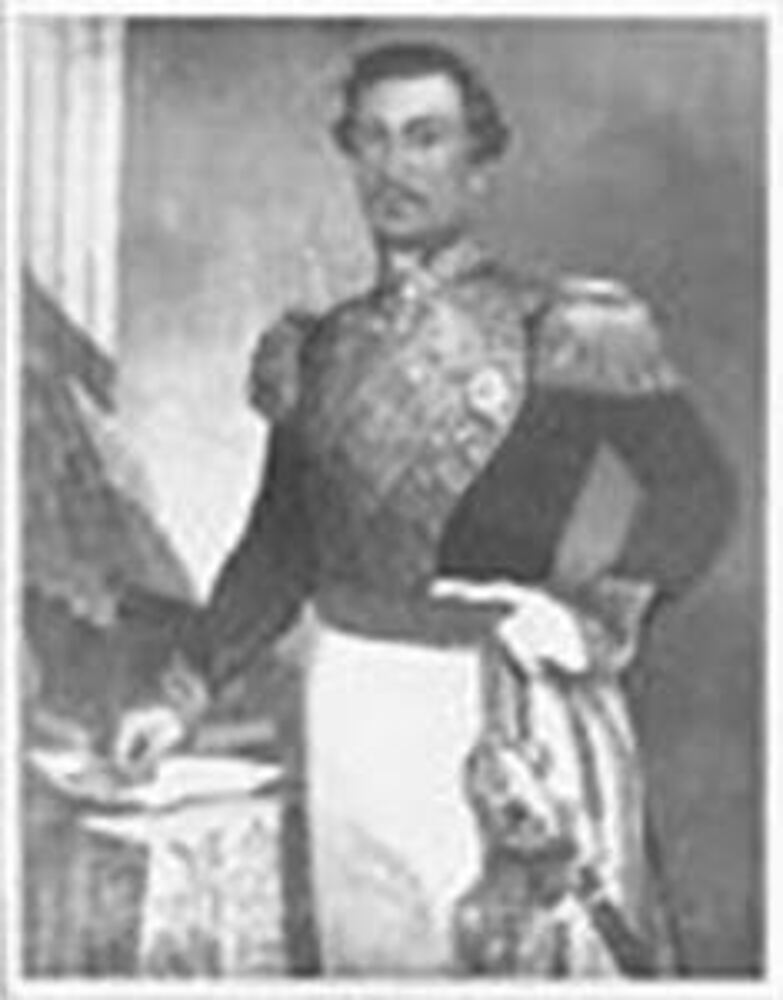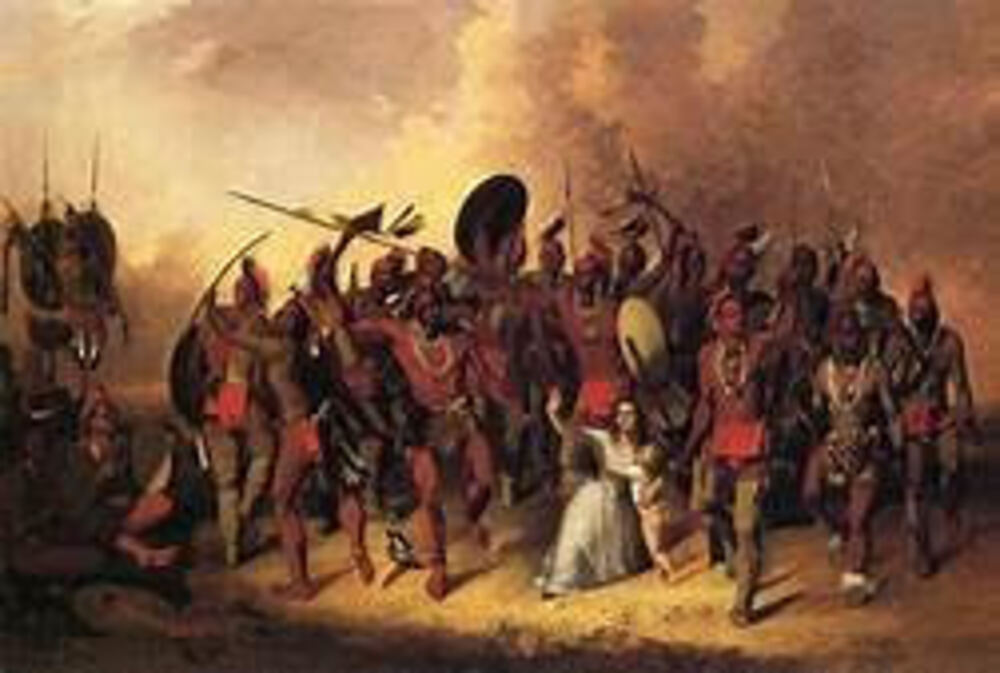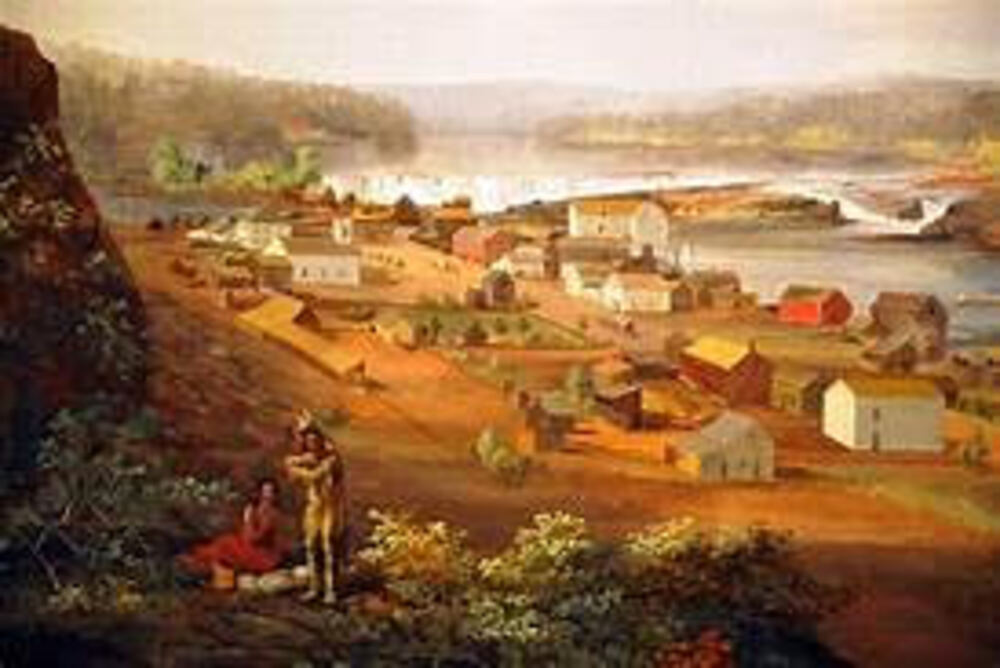Who Influenced Who?
The Whats What of the people who influenced Stanley, and who Stanley went on to influence.
My part of the group project was to research and analyze John Mix Stanley’s past and future influences that affected his paintings and career. Specifically, there are four experiences that Stanley had that affected his work, such as assisting Sumner Dickerman ar Fort Gibson, attending the Tahlequah council, painting scenes from the Mexican War, as well as painting portraits for King Kamehameha III in Hawaii. All these experiences taught him the importance of portraying history, specifically painting the triumphs and struggles of Native Americans, as well as landscapes from his journey through Oregon and Washington. Overall, when analyzing and looking at Mt. Hood from the Dalles, one might notice a combination of his talents and experiences in this particular painting. For example, the portrayal of Native Americans and the landscape of the mountain and river flowing into the lake.
John Mix Stanley assisted Sumner Dickerman and they settled at Fort Gibson in Indian Territory (present-day Oklahoma); the community was near many Indian nations. They observed Native American life there and documented it through paintings. In the summer of 1843, Stanley went to the council at Tahlequah ordered by the Cherokee chief John Ross and the "Republic of Texas" at the time. An estimated 10,000 Native Americans of 17 tribes attended to negotiate peace with Texas. Tahlequah was established as a capital of the Cherokee nation in 1839, as part of the new settlement in Indian Territory after the Cherokee Native Americans were forced west from the American Southeast on the Trail of Tears. Stanley spent four weeks there and worked intensely in the following months to complete numerous paintings of individuals and tribal groups, such as the Cherokee and Creek groups. He wanted to leave Americans "a gallery of Indian pictures... to remind them of the former existence of a race which has made perhaps a more gallant and prolonged defense of their independence than any recorded in the widespread annals of warfare between savage and civilized men.” (Wikipedia) (Boggs) For example, the Osage Scalp Dance, painted in 1845 showed the “Melodramatic tales of scalping in the U.S.”.
At the outbreak of the Mexican War in 1846, Stanley was appointed a draftsman for the Corps of Topographical Engineers to Colonel Stephen Watts Kearney's expedition to California and the Oregon Territory. He produced many sketches and paintings of his journey, finishing additional paintings after reaching San Francisco in early 1847. The paintings portrayed soldiers, Native American raids and other scenes of the war. For example, he painted Black Knife, an Apache War in 1846. “Baishan, also known as Black Knife, or his Spanish name, Cuchillo Negro, was a celebrated Apache chief. His raids on Mexico made him a nominal ally of the United States army battalions sent to the area following the outbreak of the Mexican War. The Apache focused on protecting their ancestral lands, which had become a battleground contested by both the Mexicans and Americans.” Furthermore, he traveled north to the Oregon and Washington territories to paint landscapes and various Native American tribes and worked through part of 1848. For example, Oregon City on the Willamette River. (Wikipedia) (Smithsonian)
Following these expeditions, he traveled to Hawaii, where he painted portraits for King Kamehameha III in 1848. For example, Stanley’s portrait of King Kamehameha, made in 1850, is a black and white painting of the King in his military attire.
Overall, the importance of John Mis Stanley’s journeys relates to the objects in Mount Hood of the Dalles painting. There are Native Americans to reflect his experience documenting their life, as well as a landscape of Mt. Hood. One might agree that the Native Americans have settled in a quiet place to escape the dangers of settlers. Also, people will notice the beautiful landscape of the mountain, as well as the waterfall that goes into the lake that the Native Americans settled on. This painting reflects a compilation of Stanley’s journeys of following Kearney’s expedition in the Mexican War, as well as his personal journey through Oregon and Washington. Because Stanley focused on landscapes later in his career, it is understandable that Mt. Hood has a larger presence that the Native Americans setting on the point.
Osage Scalp Dance- John Mix Stanley
oil on canvas, 1845
in Smithsonian
“Melodramatic tales of scalping were popular in Europe and the U.S. throughout the 19th century. This painting shows a villain wielding a war club over a desperate woman's head.”
Oregon City on the Willamette River
oil on canvas, painted around 1850-52 is a landscape scene of the Willamette River
took a 1,000 mile journey down the Columbia River in Oregon
“Oregon City reflects contradicting themes of romanticism and reality—it is a town with thriving lumber and fishing industries, yet the community displaced the Native American population and significantly changed the environment”
“Stanley places two Willamette Indians in the shadows of the ridge. Their body language adds a sharp note of melancholy to the scene. He was also aware of the problems facing Oregon’s Native Americans, and this portrayal of them shows that they were losing lands to these settlements.”
Created For
K-12 EducatorK-12 Student
Museum Visitor
UMMA Docent
UMMA Staff
University Faculty
University Student
Rate this Resource
AVG: 0 | Ratings: 0
& Author Notes
All Rights Reserved (Boggs, J. D. (2016, 04). JOHN MIX STANLEY: THE 'OTHER' INDIAN PORTRAITIST. Wild West, 28, 24-25. Retrieved from http://proxy.lib.umich.edu/login?url=https://search-proquest-com.proxy.lib.umich.edu/docview/1761132562?accountid=14667
John Mix Stanley. Wikipedia, Wikimedia Foundation, 14 Apr. 2018, en.wikipedia.org/wiki/John_Mix_Stanley.
Stanley , John Mix. ?Black Knife, an Apache Warrior.? Smithsonian American Art Museum, americanart.si.edu/artwork/black-knife-apache-warrior-22852.
Stanley, John Mix. ?Inspiring Visions: Artists' Views of the American West.? Amon Carter Museum, 2003, www.cartermuseum.org/Inspiring_Visions/Stanley/stanley_art.html.
Stanley, John Mix. ?Osage Scalp Dance.? Smithsonian American Art Museum, americanart.si.edu/artwork/osage-scalp-dance-22856.)
Last Updated
April 16, 2018 8:39 p.m.Report
Reporting Policy




